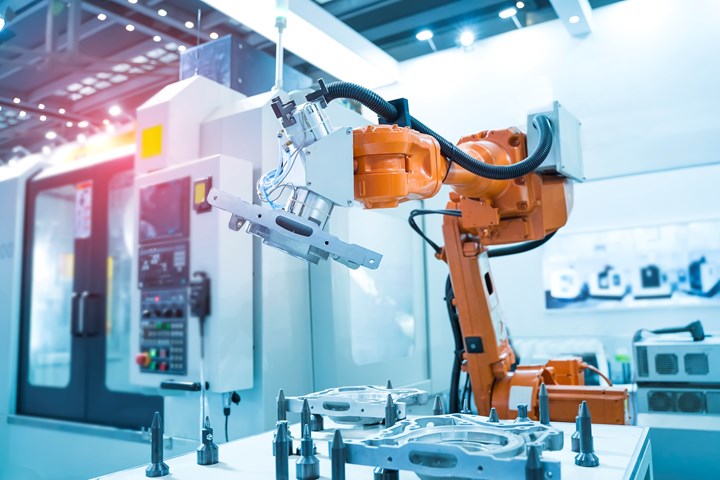3 Rules of Thumb for Buying New Equipment or Technology
Follow these rules each time you make a purchase.
Share




As manufacturers, we are in one of the most capital-intensive industries, and it can seem like we are always investing in our businesses without pause. Technology is constantly advancing, and it can be a struggle to keep up. This is why I have come up with some rules over the past 50 years for purchasing new equipment and technology. In this column, I discuss the three major rules that I consider each time I make a purchase.
The first rule is to try not to buy new equipment or technology when the shop is busy. I know this does not make conventional sense, but hear me out: Many manufacturers tend to buy equipment and technology when the shop is busy, but when the shop is busy, so is the rest of the industry. This means the price of equipment is higher, purchase terms can be more expensive and discounts can be rare. It also means that you will have long wait times for your equipment to arrive and, therefore, the equipment will not be available for the current customer demand.
Instead of buying new equipment or technology when the shop is busy, here’s an alternative: Buy when it is slow. This is when the best terms are available and deliveries are faster. Many shops would not dare to do this, but I believe this is the right time. It gives you time to integrate the new equipment and make it operational in the shop without a lot of customer pressure. It also allows you to be ready for customer demand when it ramps up again as the slow period ends. Customer demand usually comes back in a hurry, and if you do not have the capacity, customers may begin to look for alternatives when you cannot meet demand. This is why it is better to buy, integrate and optimize new equipment and technology when business is slow.
The second rule, which is a follow-up to the first rule, is that if you do need to buy new equipment when it is busy, it is best to buy the same type and model of equipment that you already have. That is to say, when it is busy, you should not be buying technology that is new to you. I find that buying technology that is new to me during busy times causes chaos. Operators need to learn how to use this new technology, and it takes time to implement. This will not help meet customer demand quickly or efficiently. However, when you buy the same equipment that you currently have to increase capacity, it will be faster to implement and easier to meet customer demand. As stated in the first rule: New equipment and technology is best implemented when business is slower.
The third rule, which is in regard to buying during slower periods, is to consider the customer’s point of view. Ask yourself, “Will this purchase allow me to deliver faster and with higher quality?” Customers love when vendors can deliver faster, but the luxury of long lead times is few and far between. It seems like every customer needs their parts immediately or as close to immediately as possible. New purchases should increase the shop’s capacity to deliver parts quickly.
In addition enabling the shop to deliver faster, I also look to see if the equipment will deliver higher quality parts. While new equipment or technology should lead the shop to increase throughput, do not let part quality suffer in exchange, because this is not good for the customer or your shop’s reputation. Quality is of the utmost importance. Having new technology and equipment that can both deliver parts faster and of higher quality is good for the customer and, therefore, good for your machine shop.
There are many other, smaller rules that I consider when purchasing new equipment or technology, but these are the major ones. Here’s a recap: Buy new equipment when it is slow so you get the best deal, as well as have enough time to get up and running without as much customer pressure. If it is busy and you are buying, then buy the same equipment you already have, since it is easier to implement and meet the customer’s demand. Lastly, when buying new technology and equipment during slower periods, buy what will deliver to the customer faster and with higher quality.
Read Next
5 Rules of Thumb for Buying CNC Machine Tools
Use these tips to carefully plan your machine tool purchases and to avoid regretting your decision later.
Read MoreSetting Up the Building Blocks for a Digital Factory
Woodward Inc. spent over a year developing an API to connect machines to its digital factory. Caron Engineering’s MiConnect has cut most of this process while also granting the shop greater access to machine information.
Read MoreBuilding Out a Foundation for Student Machinists
Autodesk and Haas have teamed up to produce an introductory course for students that covers the basics of CAD, CAM and CNC while providing them with a portfolio part.
Read More






















.jpg;maxWidth=300;quality=90)




